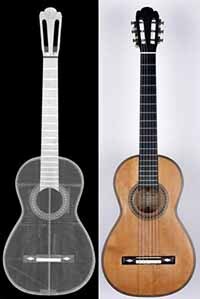Special Applications
Biology & Medicine, Archaeology, Art and Music
Biology & Medicine
The industrial X-ray computed tomography (XCT) is beside its main area of application as a non-destructive and contact-free inspection method in automotive and aerospace industry, also a powerful tool for structural analysis in the areas of art, medicine, biology and archaeology:
The exact geometrical analysis of outer and inner structures of biological samples (e.g. teeth and bones) can be achieved with high-resolution µ-XCT with a resolution of several microns. The surface information can be extracted from the volumetric data set. Both the outer and inner surfaces are represented in a surface model. By applying a threshold based segmentation of grey values, different kind of materials with varying density (bones, tissue) can be separated from each other and extracted into a surface representation. The finite element method can be applied to the extracted surface models. This has been demonstrated e.g. in the case of a cow leg, which allowed to draw conclusions about optimal floor conditions in barns. In the case of a forearm of a cat, XCT data revealed the quality of the medical health care after fixing a fracture.
Furthermore, suitable visualisation and rendering techniques allow highlighting certain interesting details. Transfer functions are used to apply transparency to the shell of the objects in order to get an insight view of hidden structures.

Archaeology, Art and Music
In the last years, the industrial X-ray computed tomography (XCT) has been a useful tool for characterizing invaluable objects from archaeology, art and cultural heritage origin. These objects are usually fragile, have to be handled with care and tested with a non-invasive inspection method. The interdisciplinary cooperation with scientific partners from different specialisations has led in the past to the discovery of new insights in the respective research fields. Furthermore XCT allows digitalisation, archival storage and the basis for replication (3D-rapid-prototyping) of art and cultural heritage.
The following examples including Saliera, music instruments from the Renaissance and selected archaeological objects should give an overview concerning the benefits of XCT applied to valuable objects in terms of examining the state of preservation, gaining insight into manufacturing techniques, etc.
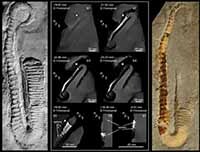
Saliera is the only remaining goldsmith’s piece from Benvenuto Cellini. After a spectacular art theft, the golden salt storage has been found buried in the woods. During the restoration FH Wels has been asked to examine both figures of Saliera (Neptun and Tellus) in order to identify any damages dealt to these golden figures. Furthermore, interesting questions concerning materials, manufacturing techniques and its wall thickness have been investigated: Both figures have been manufactured out of gold foils. There is no evidence concerning casting. The gold foils are less than 1 mm thick. Damages such as cracks and cavities could be found.
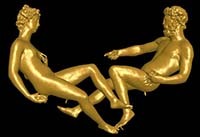
In order to breathe new life into antique woodwinds, XCT has been used to extract geometrical information like length, inner and outer diameter, positions, diameter and form of finger holes within up to 100 segments in an historical serpent. The data has been used as an input for a sound simulation.
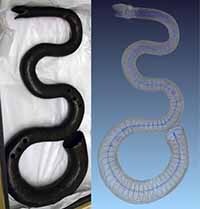
Both violins from Stradivari and Guarneri are famous for their unique sound. In order to disclose some part of this secret, the corpuses of both instruments have been inspected in detail. A direct comparison revealed the small differences in manufacturing techniques and materials used. The determination of the wall thickness at certain positions allows the music expert to set up the perfect sound. Furthermore, dendrochronological investigations and classifications have been started, in which the width of the tree-ring is studied.
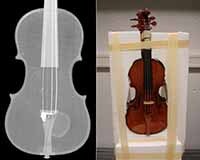
A German Canadian instrument maker could not find a suitable industrial XCT system in North America and travelled back to Europe in order to do the non-destructive tomographic investigations on a spanish concert guitar. Similar to the investigations on the violins the instrument maker was interested in the manufacturing quality, wall thickness, inner and outer geometry as well as on the state of preservation.
